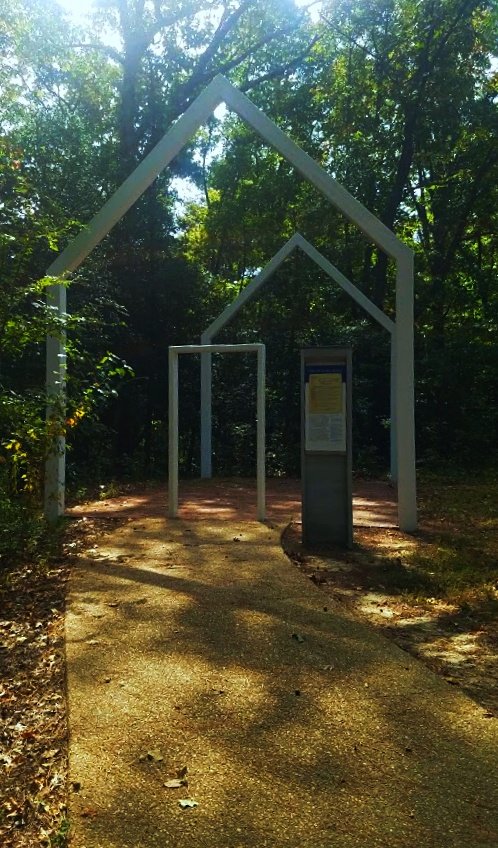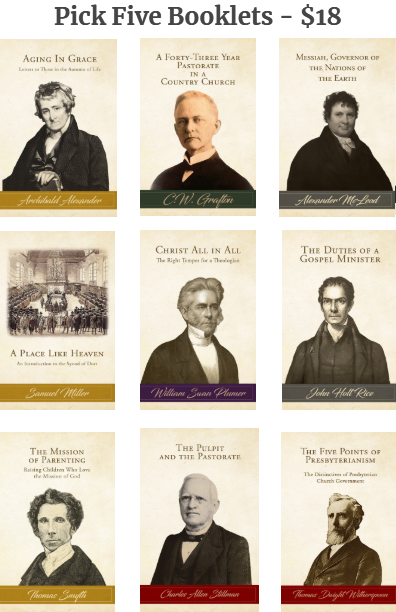(Receive our blog posts in your email by clicking here. If the author links in this post are broken, please visit our Free PDF Library and click on the author’s page directly.)
For a good basic introduction to some of the major distinctive tenets of 19th century American Presbyterianism, Ashbel Green Fairchild has what you are seeking. In a tract titled “What Presbyterians Believe” he sketches, in opposition to certain caricatures, an outline of what Presbyterians truly affirm that the Bible teaches.
For example, Presbyterians believe that all who are saved are saved by the sovereign grace of God, not of works on the part of believers. Fairchild takes great pains to make clear the plan of salvation, as understood by his church and taught by the Scriptures and the Westminster Confession of Faith.
The Scriptures often make mention of a people as “given to Christ,” as “chosen in him before the foundation of the world,” and as “predestinated unto the adoption of children.” These, and many similar declarations, we regard as intended to teach one of tin most cheering doctrines of the Bible, viz:
THE ELECTION OF GRACE, OR GRATUITOUS ELECTION
After explaining the nature of the fall of man, and how all men, being completely wedded to their sins are totally averse to coming to God, Fairchild shows that God’s mercy toward mankind is immense, purposing from the beginning not to leave all to justly perish, but willing to save some from their sins, despite the unwillingness of any on their own to be saved.
… this determination of the Father, to make a people willing to come to Christ, including in it the means to secure the end, is what we style the election of grace. It was truly a purpose of grace, because its objects were not chosen on account of any goodness foreseen in them. On the contrary, God beheld them as sinners, who but for the interposition of electing love, would never be anything but sinners. He chose them to salvation as the end, and to faith and holiness as the means, and thus their election originated from his own spontaneous mercy.
Speaking further of the plan of salvation, Fairchild addresses a common concern that if God has pre-determined who receives saving grace, such is incompatible with a free offer of the gospel.
Such is the election of grace as it is held in our branch of the Church, and we may see that it perfectly harmonizes with the free unlimited offer of salvation. All are hidden to the gospel feast, because it is the duty of all to come, — because all are alike needy — because there is enough for all, and because all are to be left without excuse. When all refuse the invitation, God interposes to save a “remnant according to' the election of grace.”
Nor is there any force in the objection, “that if a man is elected, he will be saved, do what he may.” For we have seen that the elect are chosen to be saved, not from the punishment of sin merely, but from sin itself. They are chosen to be holy. The objection, then, amounts to this: that if a man is to be saved from sin, he will be saved, whether he be saved from sin or not!
Other objections are addressed by Fairchild:
The doctrine of election makes God to be partial (showing favoritism);
If election is true, there is no point in making use of the means of grace;
If God is sovereign over all, prayer is useless.
With Scripture Fairchild shows that far from these objections having merit, the doctrine of election confirms that God’s mercy is not the outworking of partiality, that God ordains the means of grace as well as the end of salvation, that prayer is part of God’s plan of salvation and has immense importance and purpose.
Fairchild goes on to speak of the perseverance of the saints in holiness. Those whom God has decreed to save will be kept from falling by not being left to their own strength. What a comfort this doctrine is! Our strength will fail, but God’s power to keep his saints, “through faith unto salvation” (1 Pet. 1:5), means that God will be glorified not only by granting us a potential to be saved, but in actually seeing our salvation through until it is finally and fully accomplished.
Then Fairchild affirms another article of the Presbyterian creed — the definite, vicarious atonement of Jesus Christ. That atonement was not sufficient for all, but efficient for none. On the contrary, it is sufficient for all, and efficient for those for whom Christ’s saving work was intended.
It has been said that, on this subject, the point of difference between us and others is, whether Christ died for all? But this is not a. fair statement. We do, indeed deny that Christ died for all, in the sense in which that expression is understood by Arminians; but our Church has always maintained that in respect of the sufliciency and applicability of the Saviour’s sufferings, he may be said to have died for the whole world. The real ground of controversy among those who agree as to the nature of the atonement is, What is its ultimate design? Had the Lord Jesus no definite purpose to save any one? or did he suffer with the intention of saving all men?
We cannot think that Christ had no definite purpose in regard to the objects of his interposition. The Scriptures represent him as coming into the world with a positive intention to save sinners, not merely to render their salvation possible. Nor can we imagine that an all-wise Being would enter upon a work of such unexampled labour and suflering without a precise object to be attained. On the other hand, if we say that Christ intended to save all men, at once the question will arise, Why, then, are not all saved? It will not do to answer by saying, that the divine purpose has been defeated by the unbelief of man. For if God cannot hinder man’s unbelief, the prayers of Christians, and the labours of ministers, are alike useless. If God cannot make sinners willing to come to Christ, who can?
Presbyterians, therefore, deem it safest to conclude that the atonement accomplishes the design of its author, and saves all whom God intended it to save. And this doctrine, so far from being adapted to perplex inquiring sinners, has a most encouraging tendency; for if they are willing to be saved on the terms of the gospel, there must, of necessity, be a divine intention to save them — these two things being connected together in God’s decree. But if they stay away from Christ till they first ascertain what he intends to do with them, they will never come at all.
Besides the unwillingness of mankind to come to God, the inability of man to keep God’s law or to do anything that could accomplish their salvation is another key doctrine of which Fairchild speaks. And here he affirms that man’s inability does not lessen his culpability before God, nor does this doctrine present man as chained down and unable to come to God though desirous to do so. God is glorified in the true state of things wherein though man is unable to save himself or to do any good, God nevertheless enables sinners to come to Christ by faith and implants the desire to do so. “He that worketh in them to will, will not withhold the ability to do. Philip. ii.13.”
Fairchild goes on to address another theological concern - the salvation of those dying in infancy.
Presbyterians are of opinion that those dying in infancy are elect unto salvation. As they are involved in the guilt and misery of the fall, they are appropriate subjects of the divine mercy; and their election secures to them an application of atoning blood, and the renewing influences of the Spirit. Thus, when the Lord Jesus shall “gather his elect from the four winds,” infants will not be left behind.
Our doctrinal opponents dislike this view of the subject, because, if all who die in infancy are elect, then, as they could not have been elected on account of foreseen faith and works, it will follow that fully a third part of our species are saved by unconditional election.
When we speak of infants dying in infancy as elect, we mean that they are chosen out of the whole mass of human beings. Our use of the term, therefore, does not imply that any who die at that tender age are not elected. So when John, addressing the “elect lady,” speaks of her “elect sister” (2 John 13), we do not infer that she had non-elect sisters. In the exercise of his electing love, God had before him the whole race of mankind, not a particular class, age, or sex. And in the opinion of Presbyterians all who die in infancy were included in his purpose of mercy, and selected, along with others, out of the whole family of Adam.
Finally, Fairchild addresses God’s sovereignty over all things, including the evil that happens in this world. Affirming along with the Confession that God is not the author of sin, Fairchild yet explains that the Scriptures do indeed teach that nothing is outside the government of God, even sin. And that this doctrine, which he terms “divine appointment,” stands in contrast to “the gloomy notion of fate” and offers great consolation to believers in the midst of the trials of life.
Indeed, it is a prime principle with Presbyterians, that all the good in the universe proceeds from God; and all the evil from creatures, who act from their own free choice, uninfluenced by any compulsory decree.
We believe that the purposes of God do extend to all events, but not that they extend to all in the same manner. Some things God has purposed to bring to pass by his own agency, and other things, as sinful acts, he has purposed to permit, or suffer to be done by others. And the things which he does by his own agency, and those which he suffers to be done by others, include all that ever come to pass. We may add that this distinction between determinations to do on the part of God, and determinations to suffer sinful acts to be done by others, not only exists in our Confession, but has been taught by all Presbyterian divines from the earliest period.




























